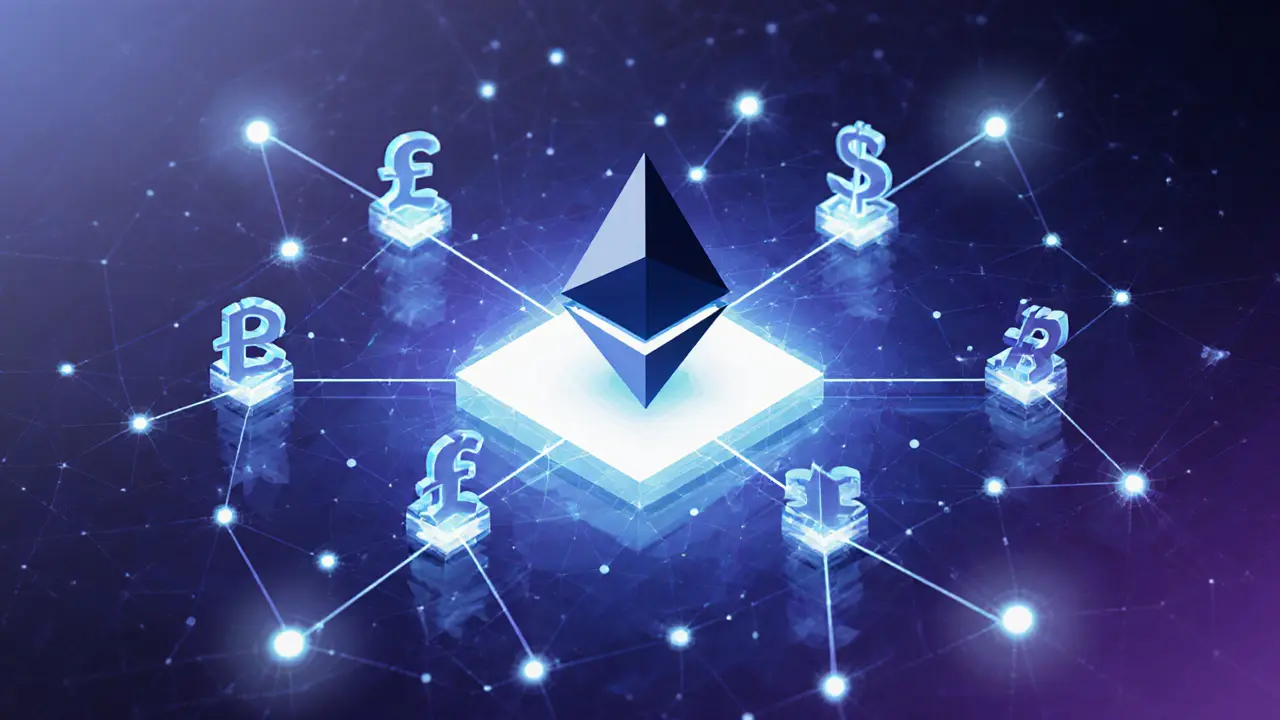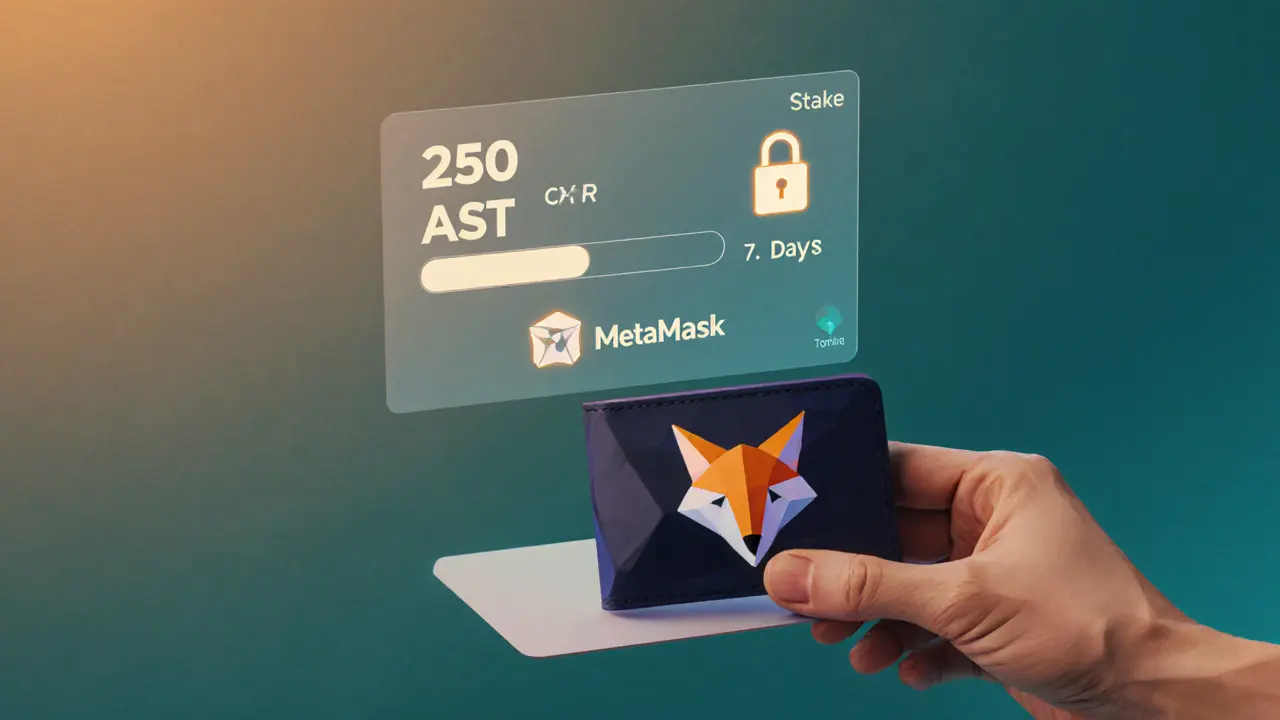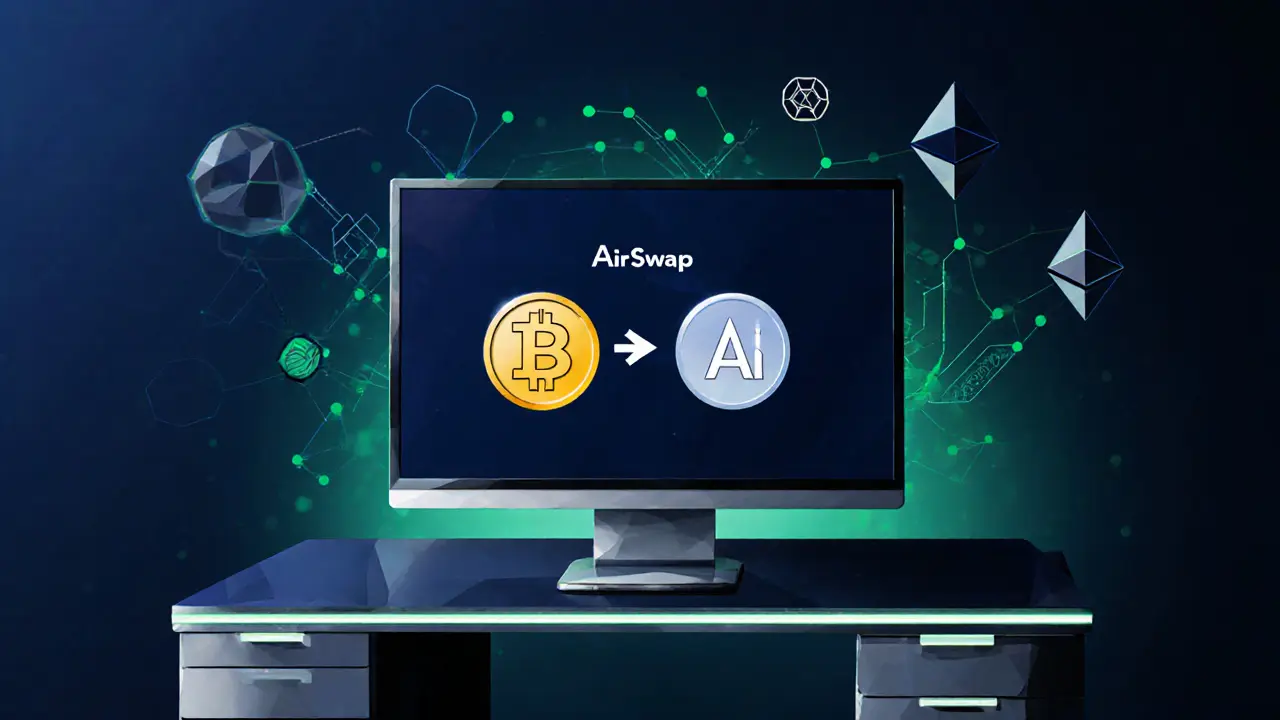AirSwap (AST) Explained: How the Peer‑to‑Peer Crypto Coin Works

AirSwap Slippage Calculator
Estimate how much slippage you'd experience when trading on AirSwap versus other DEXs. AirSwap's RFQ system minimizes slippage for larger trades.
AirSwap is a decentralized, peer‑to‑peer token trading network built on the Ethereum blockchain. It lets users swap ERC‑20 tokens directly, without an order book or a central intermediary.
What the AST token does
The native utility token, AST, fuels governance and liquidity. Holders can vote on protocol upgrades, stake to become market makers, and earn a share of swap fees once the fee‑sharing proposal passed in September 2024.
How AirSwap’s peer‑to‑peer model differs from AMMs
Most decentralized exchanges (DEXs) such as Uniswap rely on automated market makers (AMMs) and liquidity pools. AirSwap, by contrast, uses a request‑for‑quote (RFQ) system:
- Buyers broadcast a trade request off‑chain.
- Makers respond with a price based on an on‑chain oracle that aggregates multiple market feeds.
- Both parties sign a cryptographic transaction; the swap settles atomically on‑chain, eliminating counter‑party risk.
This design means large trades (often > $10,000) experience little to no slippage, while small retail trades may find fewer counterparties.
Key statistics (as of October 2025)
- All‑time trading volume: $4.42 billion across 2.64 million swaps.
- Average gas cost per trade: ~21,000 gas (≈37 % cheaper than comparable Uniswap V3 swaps).
- Market‑cap rank: #147, with a market cap around $135 million.
- Supported chains: Ethereum, BNB Chain, Polygon, Avalanche, Linea.
Becoming a maker - the staking process
To provide liquidity, a user must stake 250 AST (about $1,100 at the current price). The tokens lock for seven days, after which the maker can claim earned fees and optional fee‑sharing rewards.
Staking steps:
- Connect a compatible wallet (MetaMask, WalletConnect, or Ledger). MetaMask is the most common choice.
- Navigate to the “Become a Maker” page on the AirSwap UI.
- Approve the AST contract to spend your tokens.
- Enter the amount (250 AST) and confirm the transaction.
- Wait seven days for the lock‑up period to finish.
After the lock, makers receive a portion of the protocol’s fee‑sharing pool (0.05 % of swap volume starting Q2 2025).
Comparison with other decentralized protocols
| Feature | AirSwap | Uniswap | 0x Protocol |
|---|---|---|---|
| Trading model | RFQ, peer‑to‑peer | AMM, liquidity pools | RFQ & order‑book hybrid |
| Best for trade size | Large (> $10k) with minimal slippage | Small‑to‑medium swaps | Both small and large, but requires custom integration |
| Average gas per swap | ≈21,000 gas | ≈33,000 gas | ≈25,000 gas |
| Liquidity source | Counterparty makers (AST stakers) | Pool liquidity providers | Liquidity providers & market makers |
| Cross‑chain support (2024‑2025) | Ethereum, BNB Chain, Polygon, Avalanche, Linea | Ethereum, Polygon, Optimism, Arbitrum, etc. | Ethereum, Polygon, Binance Smart Chain |

Real‑world use cases
Professional traders use AirSwap for:
- Executing a $150,000 USDC‑to‑DAI swap with only 0.08 % slippage (versus ~0.4 % on Uniswap).
- Cross‑chain arbitrage between Ethereum and Avalanche after the August 2024 launch.
- Institutional OTC‑style trades where anonymity and no price impact matter.
Retail users often find the platform harder to grasp because they must negotiate prices manually. The community’s “AirSwap Safety Checklist” (2,300 + downloads) helps beginners verify counterparty reputation and avoid failed swaps.
Governance and community health
AST holders can propose and vote on changes. In 2023‑2024, voter turnout averaged 42.7 % across 12 proposals-high for a niche DeFi protocol. Recent governance activity includes:
- ASTIP‑23: fee‑sharing mechanism (approved with 87.4 % support).
- v4 roadmap: cross‑chain atomic swaps, maker reputation scores.
The Discord server (12,500 + active members) hosts weekly “maker training” sessions that reduce onboarding friction.
Risks and regulatory outlook
While AirSwap’s token model is technically sound, the SEC’s 2023 framework flags governance tokens as potential securities. No enforcement action has been taken yet, but projects should monitor future guidance. Other risks include:
- Limited liquidity for small trades, leading to longer quote times.
- Competition from centralized OTC desks offering instant execution.
- Reliance on off‑chain price aggregation, which could be targeted by oracle attacks.
Mitigation strategies involve diversifying across multiple DEXs and using reputable oracle services.
Future outlook
AirSwap v4, slated for Q1 2025, promises cross‑chain atomic swaps and a reputation‑based maker scoring system. Delphi Digital projects the protocol’s annual volume could reach $7.2 billion by 2026, driven by institutional adoption. However, medium‑risk ratings from analysts remind users that the niche focus may limit mass‑market growth.
Quick start checklist
- Install MetaMask and fund it with ETH for gas.
- Buy at least 250 AST from a reputable exchange.
- Connect your wallet to AirSwap’s web UI.
- Choose “Become a Maker” to stake AST and start earning fees.
- Use the “Request Quote” tab for large swaps; compare maker offers before signing.
Following these steps gets you trading on AirSwap with minimal friction.

What is the main advantage of AirSwap over traditional DEXs?
AirSwap’s peer‑to‑peer RFQ model removes price slippage for large trades because there’s no automated market‑maker curve. Trades settle atomically, so you only pay the normal gas fee.
How many AST tokens do I need to become a maker?
You must stake 250 AST, which is worth roughly $1,100 at the current price. The stake locks for seven days before you can withdraw.
Can I use AirSwap on chains other than Ethereum?
Yes. AirSwap has launched on BNB Chain, Polygon, Avalanche, and Linea. The UI automatically switches networks once your wallet is connected.
What fees do I pay when swapping on AirSwap?
AirSwap charges no platform fee; you only pay the standard Ethereum gas fee (about $1.27 per transaction in October 2024). Starting Q2 2025, 0.05 % of total swap volume will be redistributed to AST stakers.
Is AirSwap regulated?
The SEC has not taken action against AirSwap, but its governance token could be viewed as a security under the 2023 framework. Users should stay updated on regulatory guidance.

Katheline Coleman
October 23, 2025 AT 08:23AirSwap’s architecture leverages the RFQ model, thereby eliminating the traditional order book and reducing slippage for substantial trades. By employing off‑chain broadcast of trade requests followed by on‑chain settlement, the protocol ensures atomicity and mitigates counter‑party risk. The governance token AST facilitates community participation through voting and staking, aligning incentives among makers and token holders.
Amy Kember
November 9, 2025 AT 16:03The fee‑sharing proposal actually makes staking worthwhile for makers.
Evan Holmes
November 27, 2025 AT 00:43Looks like another niche DEX that only pros will bother with, not much for the average joe.
Erik Shear
December 14, 2025 AT 09:23Large‑scale swaps benefit from near‑zero slippage, but the lack of depth for small orders can frustrate retail users; still, the protocol’s focus on institutional liquidity is a smart move.